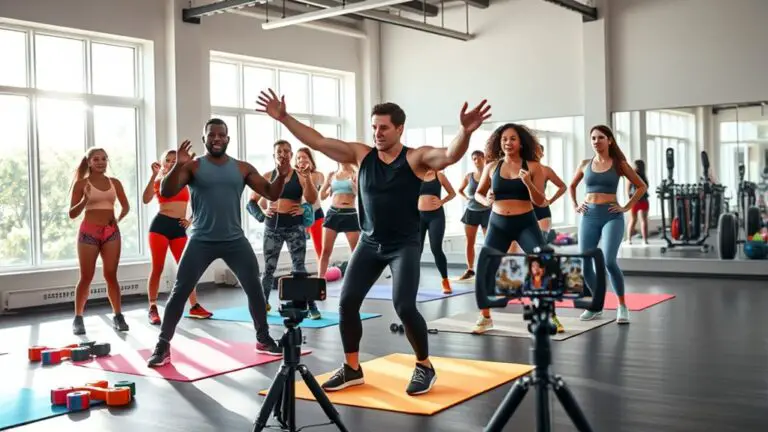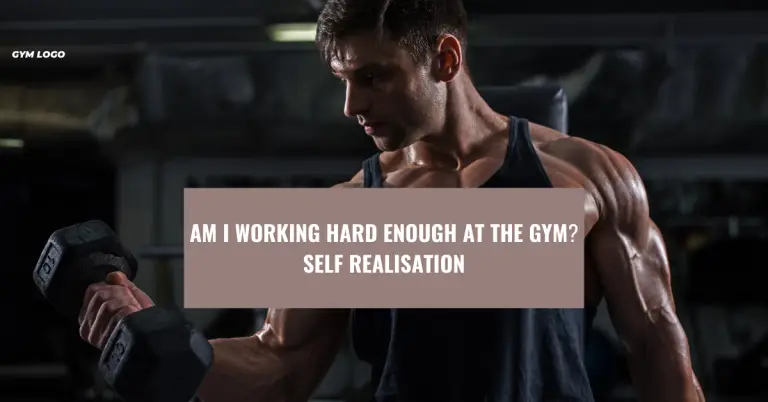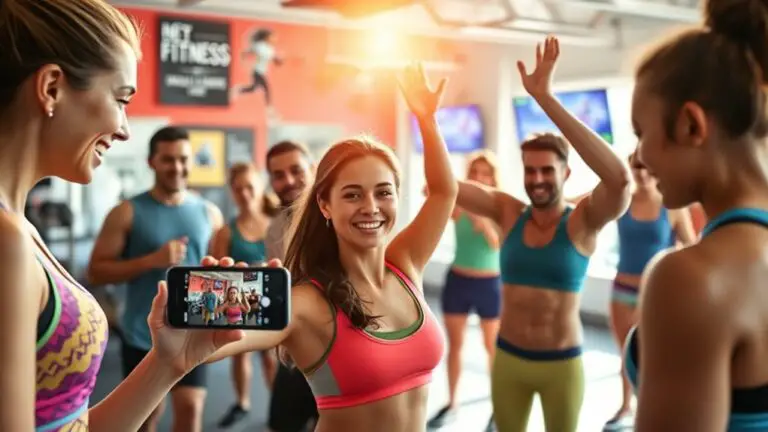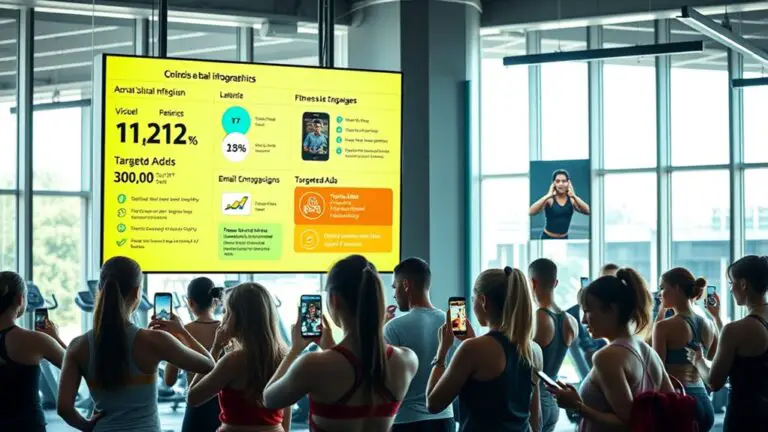The Rise of Instagram Fitness Models: Are They Real?
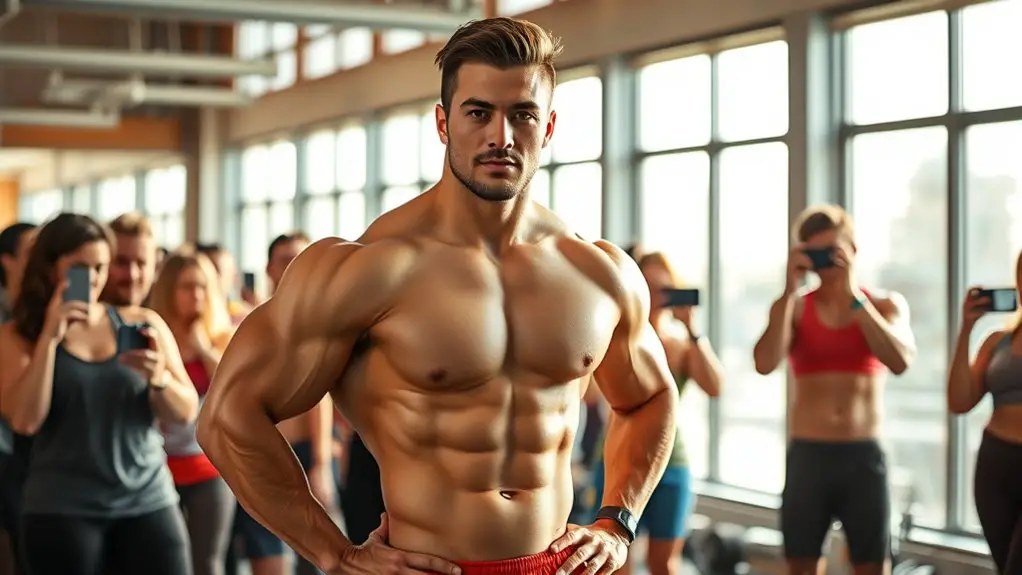
The rise of Instagram fitness models has reshaped the wellness industry, blending inspiration with an often unrealistic portrayal of body perfection. Many influencers craft carefully curated images, leading to comparison and self-doubt among followers. While they build supportive communities and share helpful tips, the reality behind this content often reveals struggles that aren’t shown. Understanding these dynamics can help you navigate the fitness landscape more healthily. Discover the finer details that can impact your view on fitness influencers.
The Emergence of Fitness Influencers on Instagram
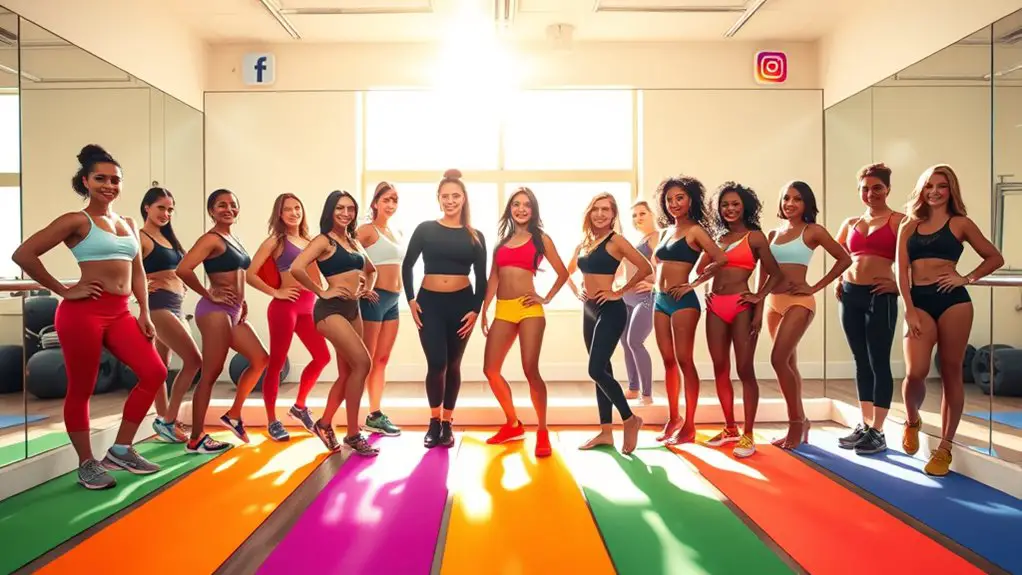
As social media platforms evolved, Instagram emerged as a powerful tool for fitness enthusiasts to showcase their journeys and inspire others. You might’ve noticed how fitness branding has transformed, with influencers leveraging their platforms to create communities around health and wellness. These influencers often share workout routines, nutrition tips, and personal stories, making fitness more accessible and relatable.
Influencer marketing plays a significant role in this landscape, as brands partner with fitness influencers to reach wider audiences. It’s not just about selling products; it’s about building trust through authenticity. As you scroll through your feed, you’ll see how influencers curate their content to resonate with followers, highlighting their fitness journeys while promoting brands they genuinely believe in. This dynamic relationship not only enhances their personal brand but also shapes the fitness industry, encouraging more individuals to engage in healthier lifestyles.
The Allure of the Perfect Body: Unrealistic Standards
You might notice that many Instagram fitness models often showcase bodies that seem unattainable, thanks to filters and editing techniques that enhance their appearance. This curated perfection can greatly influence how you view your own body, leading to unrealistic standards that aren’t reflective of reality. As you scroll through these images, it’s essential to reflect on the impact on your self-image and the pressures that come with comparing yourself to these idealized representations.
Filters and Editing Techniques
While scrolling through Instagram, it’s hard to escape the allure of fitness models flaunting seemingly perfect bodies, often enhanced by filters and editing techniques. The reality is, many of these images undergo extensive filter manipulation and editing software to achieve that coveted look. This can create unrealistic standards, leaving you feeling inadequate. Here’s what to reflect on:
- Skin smoothing: Removes blemishes and imperfections.
- Body reshaping: Alters body proportions for an idealized look.
- Lighting adjustments: Enhances features, making them appear more defined.
- Color correction: Brightens images, making them more visually appealing.
- Background edits: Eliminates distractions, focusing solely on the model.
Recognizing these techniques can help you appreciate the artistry behind the posts, while also understanding the impact on self-image.
Social Media Influence
Social media platforms, particularly Instagram, have become a powerful force in shaping perceptions of beauty and fitness, often promoting an idealized version of the human body. You’re constantly exposed to images that set unrealistic standards, making it easy to feel inadequate by comparison. This culture thrives on social validation; likes and comments can create a false sense of achievement, further entrenching these ideals. While many influencers offer fitness motivation, it’s essential to remember that their bodies are often achieved through filtered realities. This can lead to a cycle of comparison that’s not only unhealthy but also unattainable. Recognizing these influences can help you find a more balanced perspective on fitness and body image, focusing on personal growth rather than external validation.
Impact on Self-Image
As users scroll through their Instagram feeds, the allure of the perfect body often becomes a source of both inspiration and anxiety. You might find yourself comparing your own physique to those of fitness models, which can trigger self-esteem issues and even body dysmorphia. The unrealistic standards displayed can warp your perception of what’s achievable or healthy. Consider how these factors might impact you:
- Constant comparison to curated images
- Pressure to conform to idealized body types
- Feelings of inadequacy or low self-worth
- Increased anxiety about your own appearance
- Potential for unhealthy behaviors in pursuit of perfection
Recognizing these influences is essential for maintaining a balanced self-image and understanding that social media often amplifies unrealistic expectations.
Behind the Scenes: The Reality of Fitness Content Creation
Creating fitness content on Instagram often appears glamorous, but there’s much more beneath the surface. The reality of content creation involves countless hours spent planning workouts, setting up shots, and editing videos. You might find yourself juggling a hectic schedule while trying to maintain a consistent posting routine. It’s not just about looking good; it’s about delivering value to your audience.
Many fitness influencers aim for fitness authenticity, sharing tips and routines that resonate with their followers. However, the pressure to keep up appearances can lead to unrealistic expectations. You might see perfectly curated feeds, but behind those images are often struggles with self-doubt, injuries, and the challenges of balancing life and fitness. Understanding this reality can help you appreciate the effort involved in content creation, and foster a more realistic perspective of the fitness journey portrayed on social media.
Authenticity vs. Facade: What Influencers Don’t Show
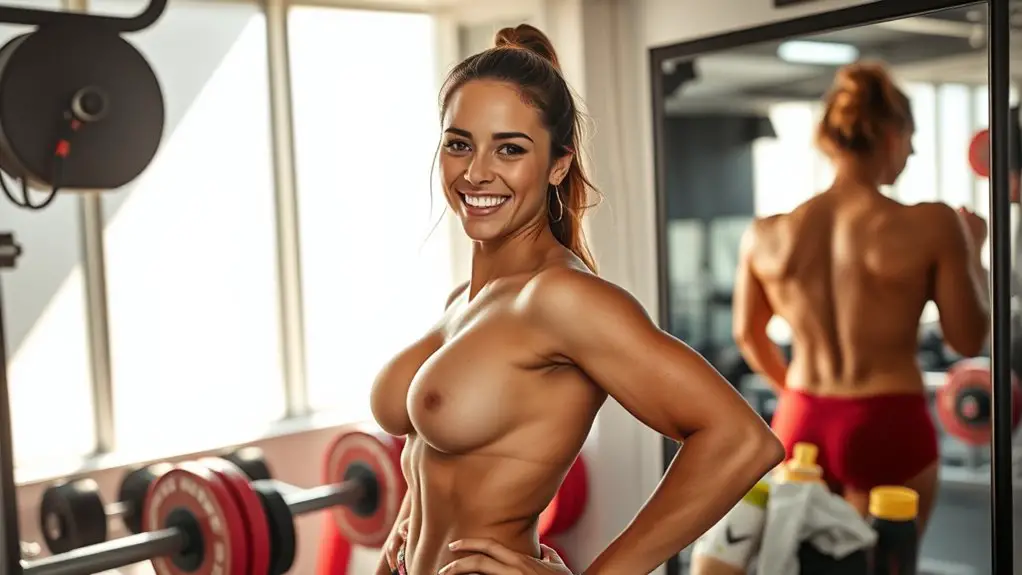
When scrolling through Instagram, it’s easy to assume that the fitness models you see lead perfect lives, but the truth often tells a different story. Many influencers post altered images that mask their real struggles, including behind-the-scenes challenges and unfiltered mental health issues. Understanding this contrast between authenticity and facade can change how you view their content and your own fitness journey.
Real vs. Altered Images
Although social media can inspire fitness journeys, it often blurs the line between authenticity and facade. Many influencers present images that can create altered expectations of what a fit body looks like. It’s essential to recognize the difference between real representation and digitally enhanced portrayals. Here are some factors that might contribute to this illusion:
- Heavy filters and editing apps
- Strategic lighting and angles
- Professional photography and staging
- Temporary weight loss techniques (like dehydration)
- Selective posting, showcasing only the best moments
While it’s easy to get caught up in these idealized images, remember that everyone has struggles. Embracing your own journey is far more valuable than chasing an unrealistic standard set by curated online personas.
Behind-the-Scenes Struggles
While the polished images of fitness influencers often captivate audiences, the reality behind those snapshots is frequently more complex and challenging. You might not see their diet struggles or the workout fatigue that sometimes hinders their progress. The pressure to constantly create content can lead to mental exhaustion, making it hard to maintain a healthy lifestyle balance. Influencers face platform expectations that often amplify comparison anxiety, as they measure their success against others. These pressures can result in personal sacrifices, like neglecting social lives or skipping rest days. It’s essential to remember that behind the glamour, many influencers grapple with these hidden struggles, reminding us that authenticity often lies beneath the carefully curated facade.
Unfiltered Mental Health Issues
Despite the stunning visuals and motivational captions that flood your feed, many fitness influencers grapple with profound mental health challenges that remain largely unspoken. Beneath the facade of perfection, they’re often facing unfiltered struggles that can impact their overall well-being. It’s essential to recognize that their reality isn’t always as bright as it seems.
Here are some common mental health issues they might encounter:
- Anxiety over performance and body image
- Depression stemming from unrealistic expectations
- Fear of failure in a highly competitive environment
- Loneliness despite a large online following
- Burnout from constant content creation
Understanding these challenges can help foster a more authentic dialogue about mental health in the fitness community, reminding us that even influencers are human too.
The Impact of Social Media on Body Image

As you scroll through your Instagram feed, you might find yourself bombarded with perfectly sculpted bodies and curated lifestyles, which can greatly shape your perception of beauty and self-worth. This constant exposure often leads to social comparison, where you measure your body against the idealized versions presented online. It’s easy to feel inadequate when you’re surrounded by images that seem unattainable.
However, the rise of body positivity movements on social media offers a counter-narrative. These movements encourage you to embrace your body in all its forms and reject harmful beauty standards. Engaging with body-positive content can help you cultivate a healthier self-image and foster acceptance. Skipping rope facts can also highlight how engaging in physical activities, like skipping, promotes overall fitness and well-being. Balancing the allure of fitness models with realistic expectations is essential. Remember, social media is just a highlight reel, and true beauty lies in authenticity, not perfection.
The Role of Sponsorships and Brand Collaborations
The influence of Instagram fitness models extends beyond personal inspiration and motivation; it also plays a significant role in shaping the marketing landscape through sponsorships and brand collaborations. These sponsorship dynamics can be essential for both the models and the brands involved, fostering a relationship that thrives on authenticity.
The impact of Instagram fitness models goes beyond motivation, significantly influencing marketing through authentic brand partnerships.
Consider these elements of successful collaborations:
- Brand Alignment: Models should partner with brands that reflect their values and lifestyle.
- Engagement Over Reach: Authentic engagement often trumps sheer follower numbers in effectiveness.
- Transparency: Clearly disclosing partnerships fosters trust with your audience.
- Content Quality: High-quality, relatable content enhances brand perception.
- Long-term Relationships: Sustainable partnerships often yield better results than one-off deals.
As you navigate this world, remember that brand authenticity is key. The right sponsorships can elevate your credibility and influence, but only if they resonate with your audience.
Building a Community: The Positive Aspects of Fitness Influencers
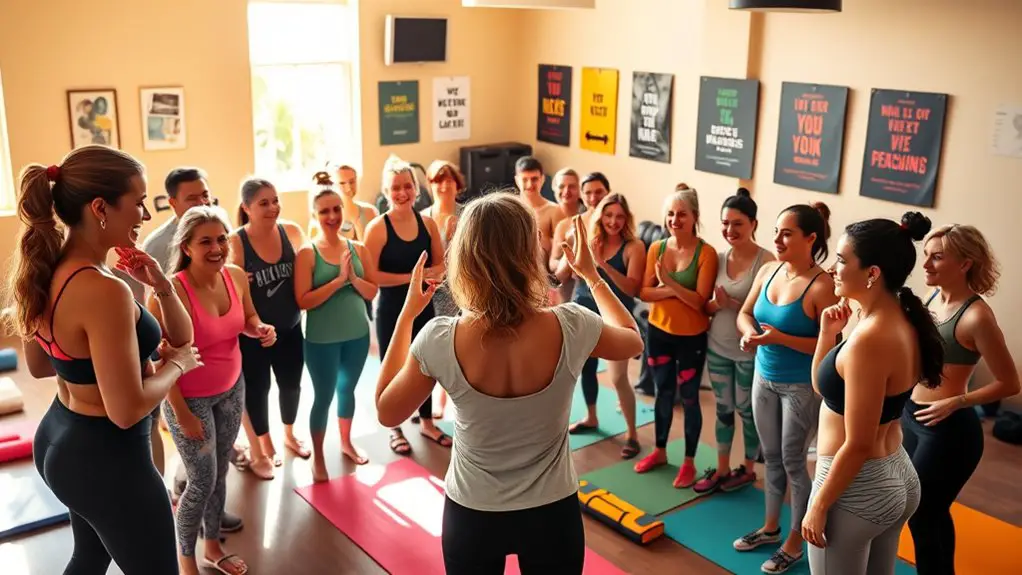
While many might view fitness influencers solely as individuals showcasing their workouts, they actually play an essential role in building supportive communities around health and wellness. By sharing their journeys, struggles, and successes, these influencers foster a sense of belonging that motivates you to pursue your own fitness goals.
The community support found within these platforms can be incredibly uplifting. You’re not just following a fitness routine; you’re joining a movement where members encourage one another, celebrate achievements, and share tips. This positive motivation often spills over into daily life, helping you stay committed to your health journey.
Moreover, fitness influencers often create spaces for discussions on mental health and self-acceptance, reinforcing that wellness extends beyond physical appearance. In these communities, you find a diverse range of voices, each contributing to a more holistic view of fitness that resonates with many, making the journey feel less isolating and more attainable. Additionally, joining a gym can provide social opportunities that enhance the fitness experience by allowing individuals to meet others with similar goals.
Steering through fitness content on social media can be overwhelming, especially with the sheer volume of information and diverse perspectives available. To help you navigate the whirlwind of fitness trends and influencers, here are some practical tips:
- Follow credible sources: Seek out certified trainers and nutritionists who provide evidence-based advice.
- Diverse perspectives: Explore various fitness styles to find what resonates with you, rather than sticking to one trend.
- Set realistic goals: Remember that everyone’s journey is different; focus on your personal progress.
- Avoid comparison: Social media often highlights the best moments; don’t let those images dictate your self-worth.
- Engage critically: Question the content you consume and be wary of quick-fix solutions that promise instant results.
Frequently Asked Questions
How Do Fitness Influencers Gain Their Large Followings?
Fitness influencers gain large followings through effective engagement tactics and audience targeting. They often post relatable content, share personal stories, and interact with followers to build a community. By identifying and catering to specific demographics, they guarantee their messages resonate with their audience. Utilizing hashtags, collaborations, and engaging visuals also plays an essential role. This combination creates a loyal fanbase, drawing in new followers while keeping existing ones actively engaged and invested.
What Qualifications Do Fitness Influencers Typically Have?
When you think about fitness influencers, you might assume they’re all just about aesthetics. However, many have solid qualifications. Most have completed certification programs in fitness training, nutrition, or wellness. Their education background often includes degrees in kinesiology, exercise science, or related fields. This blend of formal training and hands-on experience helps them create effective content, provide valuable advice, and connect authentically with their followers, making their influence more credible.
How Do Sponsorship Deals Affect Content Authenticity?
Sponsorship deals can greatly impact content authenticity. When influencers don’t guarantee sponsorship transparency, their followers might question the integrity of their recommendations. You may notice that sponsored posts often feel less genuine, as influencers might prioritize brand messages over honest opinions. This can lead to a disconnect with their audience, eroding trust. Ultimately, maintaining content integrity while steering through sponsorships is essential for influencers wanting to keep their credibility intact.
Are There Any Regulations for Fitness Advice on Social Media?
You might think anyone can give fitness advice online, but the truth’s more complex. While there’re social media guidelines, they often lack teeth, and health regulations vary by region. This means that many influencers can share unverified tips without consequence. As you scroll through your feed, remember to question the credibility of the advice. It’s essential to differentiate between well-researched guidance and mere opinion, especially when your health’s on the line.
How Can I Verify an Influencer’s Fitness Credentials?
To verify an influencer’s fitness credentials, start by checking their certifications. Look for recognized organizations like ACE or NASM. You should also review their educational background and any specialized training. Don’t forget to assess their experience and client testimonials, as these contribute to their credibility. Engaging with their content can reveal their knowledge and approach, too. In short, thorough credential verification helps guarantee you’re following reliable fitness advice.
